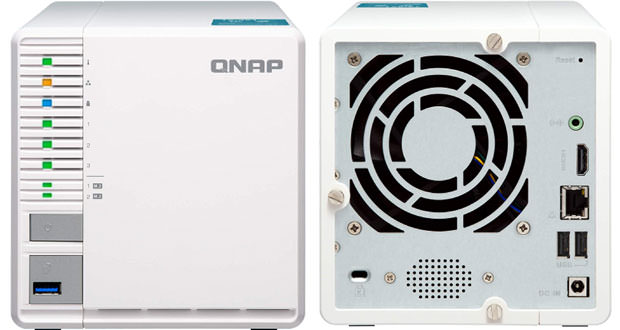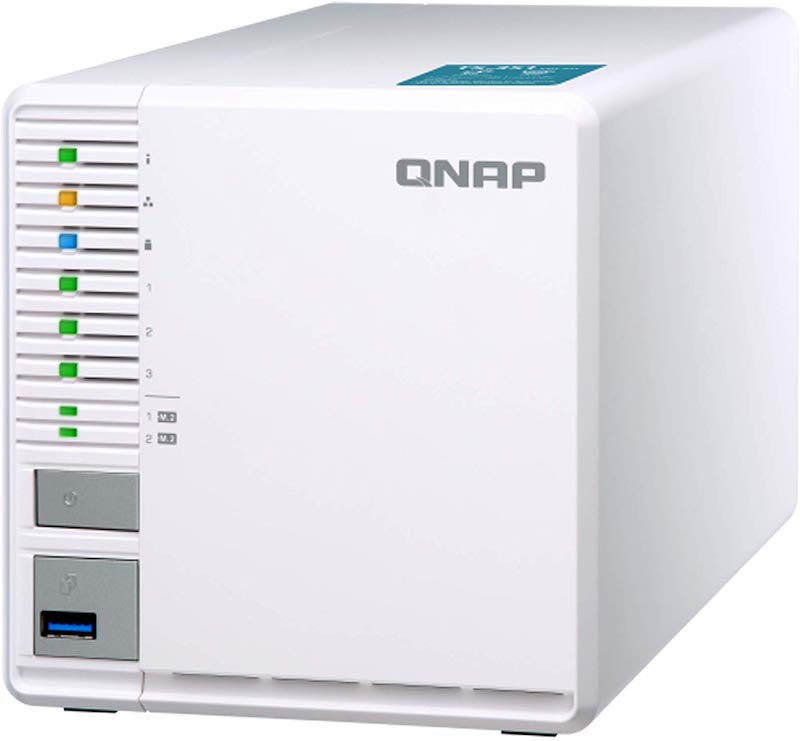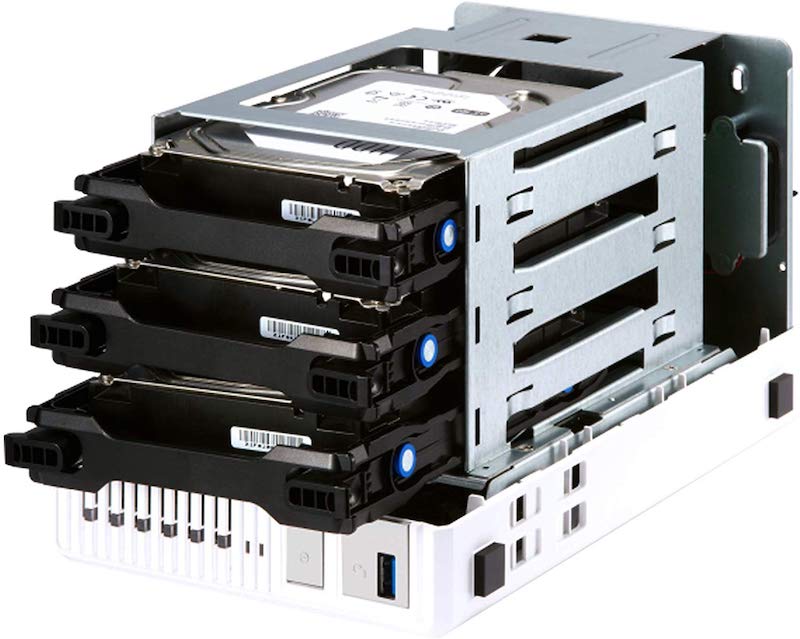QNAP TS-351, Three units may suffice (for RAID5)
A very particular NAS, QNAP TS-351: an unusual three unit, which offers itself to users who want to spend little but without giving up the RAID 5 configuration. All while enjoying the excellent qualities of the QNAP QTS management system and the universe of app that the company makes available, both in QTS itself and for the mobile world.
For some reason, the NAS with which we are usually confronted and which we may consider when purchasing, always have an even number of units. Yet there are exceptions, such as QNAP TS-351, which has three main 3.5-inch drives, which are flanked by two second-generation M.2 PCIe slots. Unusual, definitely, but with its own why. Yeah, why build and/or buy a 3 unit NAS?
Besides the reduced dimensions (certainly not among the most important features with which to judge a NAS …) there is certainly that of the price and possible configurations. A two-unit NAS can be too limiting, as we can at most opt for RAID 0 or 1 chains, while the choice extends to the much-used RAID 5 going up to normal four-unit NAS.
QNAP TS-351, equipped with three hard drives, allows you to have a RAID 5 configuration for less, if saving money is among the priorities, but you don’t want to give up the benefits that a NAS guarantees.
Simplifying very much, we can remember that with the RAID 5 mode, for which at least 3 identical hard disks are needed, you can tolerate the breaking of a hard disk without losing data, but with higher speeds than the ” mirroring ” RAID 1 as the data, they are distributed on all disks. Higher read speeds than RAID 1, in short, but at the same time the security of not losing anything if a disk fails.
Attention: we are not talking about the cost itself of the NAS itself, certainly not exorbitant but not so far from a four unit even of the same brand. We are talking about the not negligible cost of high-capacity disks. We postpone some considerations of final price to the conclusions, passing now to describe this unusual model of QNAP.
QNAP TS-351 – Specifications
| QNAP TS-351 | |
| CPU | Intel® Celeron J1800 dual-core 2,41GHz (burst 2,58 GHz) |
| Memory | 2GB SODIMM DDR3L (1 x 2GB) – one free slot for update |
| Flash Memory | 512MB (operating system) |
| 3.5″ Disk Drive | 3 |
| M.2 DIsk Drive | 2, format 2280 NVMe limit 500MB/s PCIe Gen2x1) |
| SSD Cache Acceleration | Yes, or with the third record, or with one or two M.2 |
| Gigabit Ethernet | 1 |
| USB ports | 2 USB 2.0, 1 USB 3.0 |
| HDMI output | 1 HDMI 1.4a (1080p) |
| Dimensions | 5.59 x 5.9 x 10.24 inches |
| Fan | 1 – 9 cm |
| Noise | 21.8 db(A) |
| Power Supply | Exterior, 65W |
QNAP TS-351 is a NAS whose operating core consists of an Intel Celeron J1800 dual core CPU, supported by 2GB of RAM. The quantity is perhaps a bit too limited for virtualized environments, but it must be said that there is an empty SO-DIMM slot (visible in the image gallery) in order to make it fit the need. The operating system is hosted on a 512MB Apacer eMMC, while as already mentioned the 3.5-inch disk slots are three.
On the motherboard, there are also two PCIe slots, although limited to PCIex2 Gen 1, which in practice means a maximum transfer rate of 500MB/s. There is a consideration to be made, which we will then take up again in the conclusions: any SSDs installed are caching, only for internal management of flows and data movement / loading / writing. 500MB/s is in any case higher than the best transfer rate obtainable from mechanical disks, so there would be no benefits if greater interface speeds were used.
Complete the basic description 2 USB 2.0 ports, a 3.0 port, as well as the HDMI 1.4a output, capable of handling streams up to 1080p. We leave the ethernet port last: it is a single 1Gbit (on a ” value ” product you certainly couldn’t ask for a 10Gbit Ethernet), but two would not have failed, to be used in link aggregation. The power supply is 65W, while the cooling provides the 9cm fan located in the back.
The disks are installed without the use of tools, with simple and intuitive joints even for those who do not usually fiddle with the hardware. The content of the package includes, in addition to the NAS (which includes the 3 small drawers with the related hard disk plugs), an ethernet cable, the external power supply with removable wall cable, two adhesive heat sinks for the M.2 SSDs and one brief manuals for the first installation.
QNAP QTS software does not need large presentations: it is a very complete management system that we have repeatedly analyzed, which provides the user with an ” ad app ” interface and a myriad of features, many of which also available from smartphones and tablets through specific and free apps.
With this model, and with only 2GB of memory the potential for virtualization and 4K flow management is certainly reduced, but all the possibilities of management, even remote, of what is stored inside the NAS remain. Also noteworthy is the full compatibility with the most common clouds (Google Drive and Dropbox, for example), but also Plex Media Server, Apple Time Machine, iTunes Server and much more.
Considerations
We consider more important the considerations related to this product, rather than a performance test that much depends on the limit of the Ethernet port (about 100MB/s) and the installed disks. We try to ” understand ” QNAP TS-351, to know if it is right for you, or if it is better to turn your attention elsewhere.
Let’s start by saying what is not QNAP TS-351: it is not a NAS that aims at all on performance or a massive multimedia use. No outgoing 4K, limited bandwidth ports. The excellent QNAP software kit, very rich in functionality, is obviously all available, but there is no doubt that, this NAS was created to have an excellent amount of storage space while limiting costs, without giving up a RAID 5.
Two configurable drives in RAID 1 means more space available and better performance. We would have preferred, as already said, the adoption of two ethernet ports. Now let’s take a look at how much a finished RAID 5 system would cost, without caching SSD, compared to a 4 unit.
Product prices and availability are subject to change. Any price and availablility information displayed on Amazon at the time of purchase will apply to the purchase of any products.



